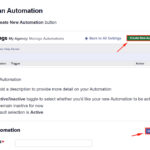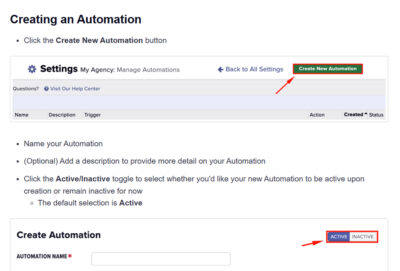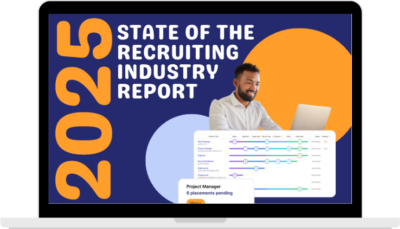(Editor’s note: The information from this article by Top Echelon Recruiting Software has been taken from an Expert Recruiter Coaching Series webinar by Tony Restell of Social-Hire.com titled, “How to Win New Clients Using Social Media.” Click HERE to watch the video of that training webinar for free.)
Social media is everywhere. It’s how we connect, share, and stay top-of-mind. But for recruiters, the question is not whether to use social media, but how to use it effectively to win new business. That’s the challenge Tony Restell of Social-Hire.com has been helping recruiters solve since 2012. In a recent Top Echelon webinar, he shared a systematized, scalable approach to turn social activity into a consistent stream of client leads.
“Most recruitment firms are spending time on social media, but they can’t point to any actual results it’s producing. That’s a big problem,” Restell explained.
In this guide, we’ll walk you through Restell’s methodology for transforming your social presence into a lead-generating machine—even if you have limited time or a small team.
Why Most Recruiters Fail with Social Media
Restell began with a sobering statistic: after surveying 800+ business owners, he found that fewer than 2% could trace consistent client leads back to their social media efforts. Meanwhile, nearly all of them said they spent considerable time and effort on it.
This disconnect usually stems from a lack of clear objectives or strategic execution. Most firms are posting content simply to “stay visible,” without ever converting that visibility into meetings or revenue.
“You should be able to look back each quarter and identify exactly which leads or placements came as a result of social media,” said Restell. “If you can’t do that, you need to rethink your approach.”
Time Well Spent? Not Always.
Recruiters are rightfully protective of their time. Speaking with candidates, nurturing client relationships, and coaching the team all take priority over crafting the perfect tweet. But Restell argues that this is exactly why your social strategy needs to be both targeted and delegatable.
“Most of the work we do for clients can be handled with just one monthly strategy call. After that, we execute the plan for them,” he said. “You can absolutely get results without spending hours on social yourself.”
The key is knowing where to spend your time and where to outsource or automate.
The 3 Social Media Failure Modes
Restell categorized most social media struggles into three buckets:
- Wrong Strategy – Businesses are posting the wrong type of content or targeting the wrong audience altogether.
- Poor Execution – The strategy is solid, but the copy is weak, the posting inconsistent, or the CTAs unclear.
- Underinvestment – They have a good plan and decent execution, but they haven’t committed enough time or budget to see results.
Figuring out where your firm falls on this spectrum is the first step toward turning things around.
How Are You Spending Your Time?
Restell asked attendees to break down their social media time into eight categories:
- Creating original content
- Curating external content
- Posting/scheduling
- Growing followers/connections
- Engaging with others
- Influencer outreach
- Converting followers into leads
- Participating in groups
Most recruiters, he said, spend 70-80% of their time on content creation, posting, and engagement—all activities that build trust but don’t necessarily convert.
“You can be the most visible recruiter on LinkedIn, but if you’re not converting that attention into conversations, you’re wasting your time.”
From Chaos to System: The Social-Hire Model
What changed everything for Social-Hire, said Restell, was systematizing outreach. Early on, his team used a now-defunct Twitter tool that identified ideal prospects based on profile keywords and tweets. Once they approved a prospect:
- The tool followed them
- Added them to a list
- Liked a tweet 24 hours later
Each interaction created a notification and reason to check out Social-Hire’s profile. If the prospect followed back, they received a tested DM offering value—usually an invite to a free Q&A session.
The results?
- 25% of prospects followed back
- 1,000+ responded to the DM
- 300 clicked through to book a call or attend a session”The magic is in creating a predictable sequence of actions that can be executed by someone other than you,” Restell said.
The 3-Part Formula: Grow, Gain Trust, Convert
Restell encourages recruiters to view social media through a simple framework:
- Grow your audience with the right people
- Gain Trust through valuable content
- Convert by turning followers into leads
“Most businesses are over-indexed on trust-building activities and under-indexed on growth and conversion,” he noted.
He recommends aiming for a one-third split: 33% of your time on growth, 33% on trust-building, and 33% on conversion.
The Math of Lead Generation
Let’s do the math: if you consistently add 500 new relevant followers or connections each quarter, and convert just 5-15% into calls, you can expect 25-75 new sales conversations every 90 days.
“That’s if you’re starting from scratch,” Restell said. “If your team already has large networks, your upside is even bigger.”
And the kicker? You don’t need to go viral to make it work. High visibility helps, but conversion tactics matter far more.
Conversion Starts with the Right Conversation
Here’s where many recruiters go wrong: they go straight for the sale in their DMs.
“Don’t open with ‘Do you have any jobs you’re struggling to fill?’ That’s like spam. It’s a turnoff,” Restell warned.
Instead, offer something of value:
- Invite them to contribute to a blog or report
- Ask them to join a panel or podcast
- Request input for market research
These conversations are not only easier to land but naturally evolve into sales discussions.
Content as a Door-Opener, Not a Billboard
Original content is important, but not for the reasons you think.
“The real value of creating reports, videos, or blogs isn’t the post itself—it’s the excuse it gives you to message someone important and ask for their input.”
When you say, “We’re producing a report on remote hiring trends, could I get your perspective?” you’ll find prospects are far more likely to say yes.
Build Trust at Scale with Influence Marketing
Don’t underestimate the power of social proof.
Find influencers in your market—those with large followings and niche authority—and engage with them. Comment on their posts, quote them in your content, or invite them to collaborate.
“If a respected voice in your niche shares your content or tags you, that’s instant credibility,” said Restell.
Get Your Ratios Right
To recap: most firms are spending 80% of their energy on gaining trust and visibility, but barely any on growth and conversion. Fixing that imbalance is your ticket to ROI.
- Growth: Regularly add new decision-makers
- Trust: Post valuable insights and content
- Conversion: Use value-based outreach to get meetings”You don’t need to be a content machine. You need to be a lead machine,” said Restell. “And you get there by converting, not just posting.”
Your Action Plan
- Audit your time: Track how much effort is going into growth, trust, and conversion.
- Rebalance your strategy: Aim for a 33/33/33 distribution.
- Create scalable systems: Delegate outreach, use scheduling tools, or partner with an agency.
- Measure what matters: Track followers gained and calls booked—not just likes and impressions.
Whether you’re a solo recruiter or run a 20-person firm, the principle holds: stop doing more. Start doing what works.
“Social media works when you stop trying to go viral and start trying to get booked,” said Restell.
For more, visit Social-Hire.com or reach out directly to explore done-for-you services or training programs.
About the Author
Tony Restell is the founder of Social-Hire.com, a marketing agency dedicated to helping recruitment and staffing firms grow through social media. With over two decades in the recruiting and digital space, Tony helps firms generate leads, win clients, and increase brand visibility without burning out their teams.









